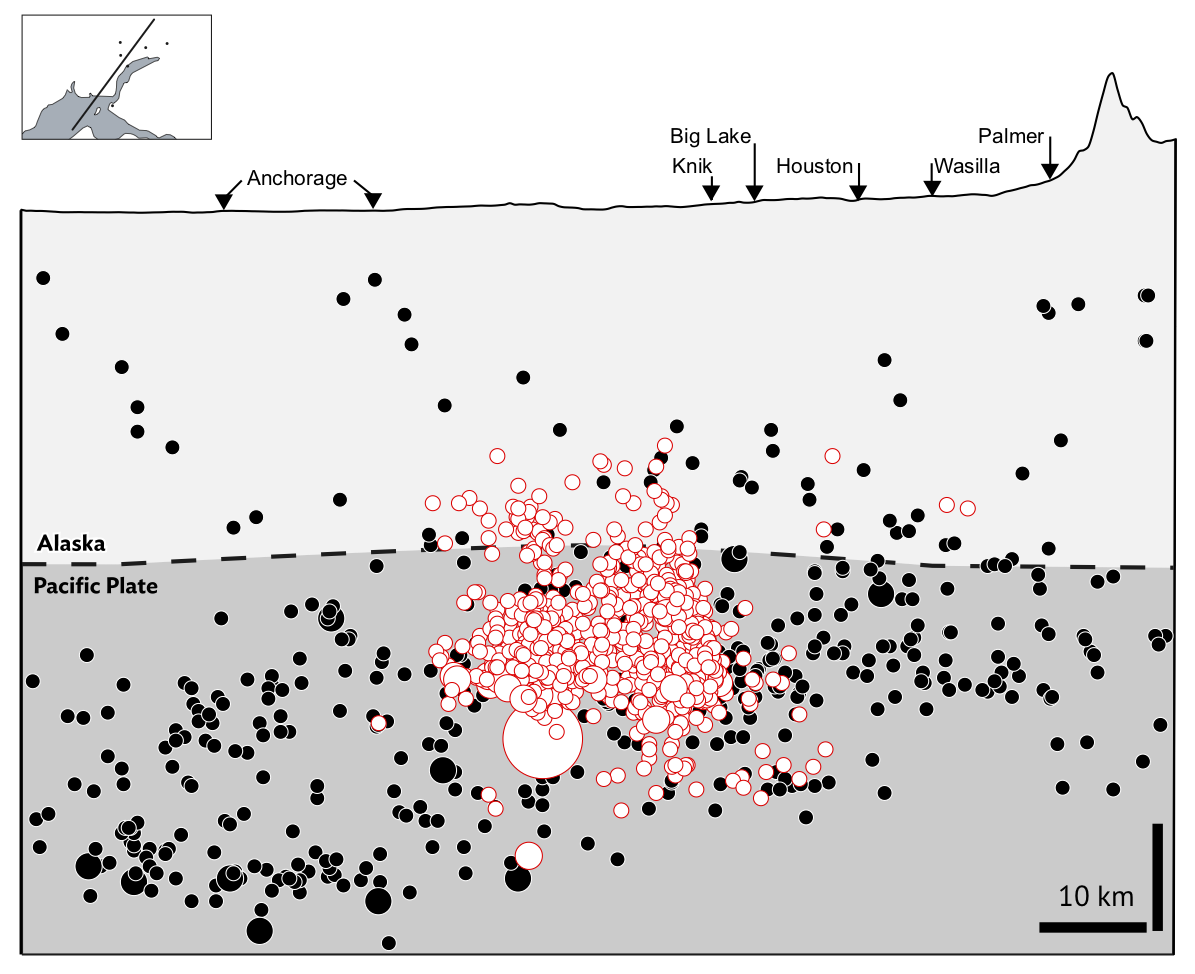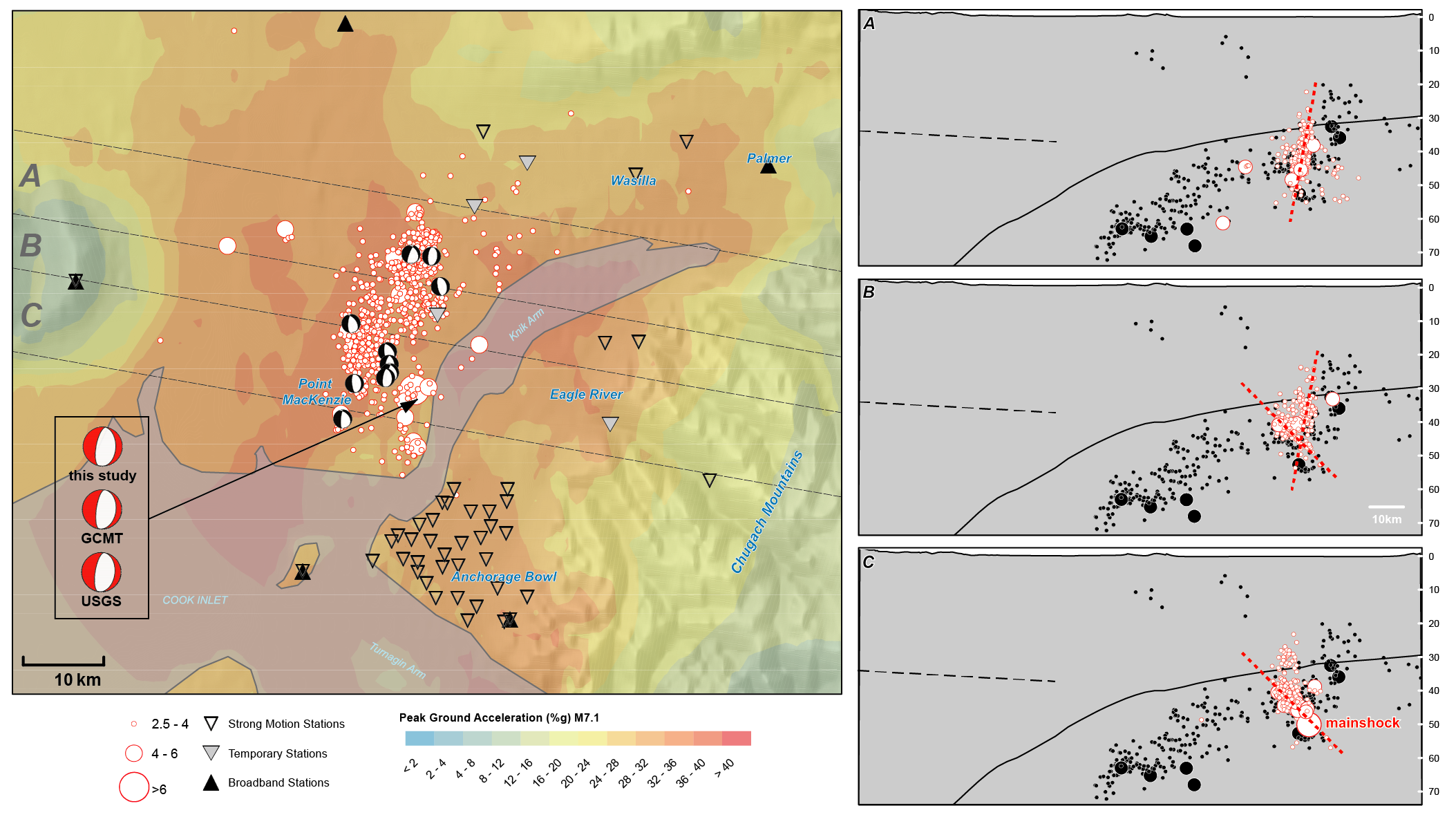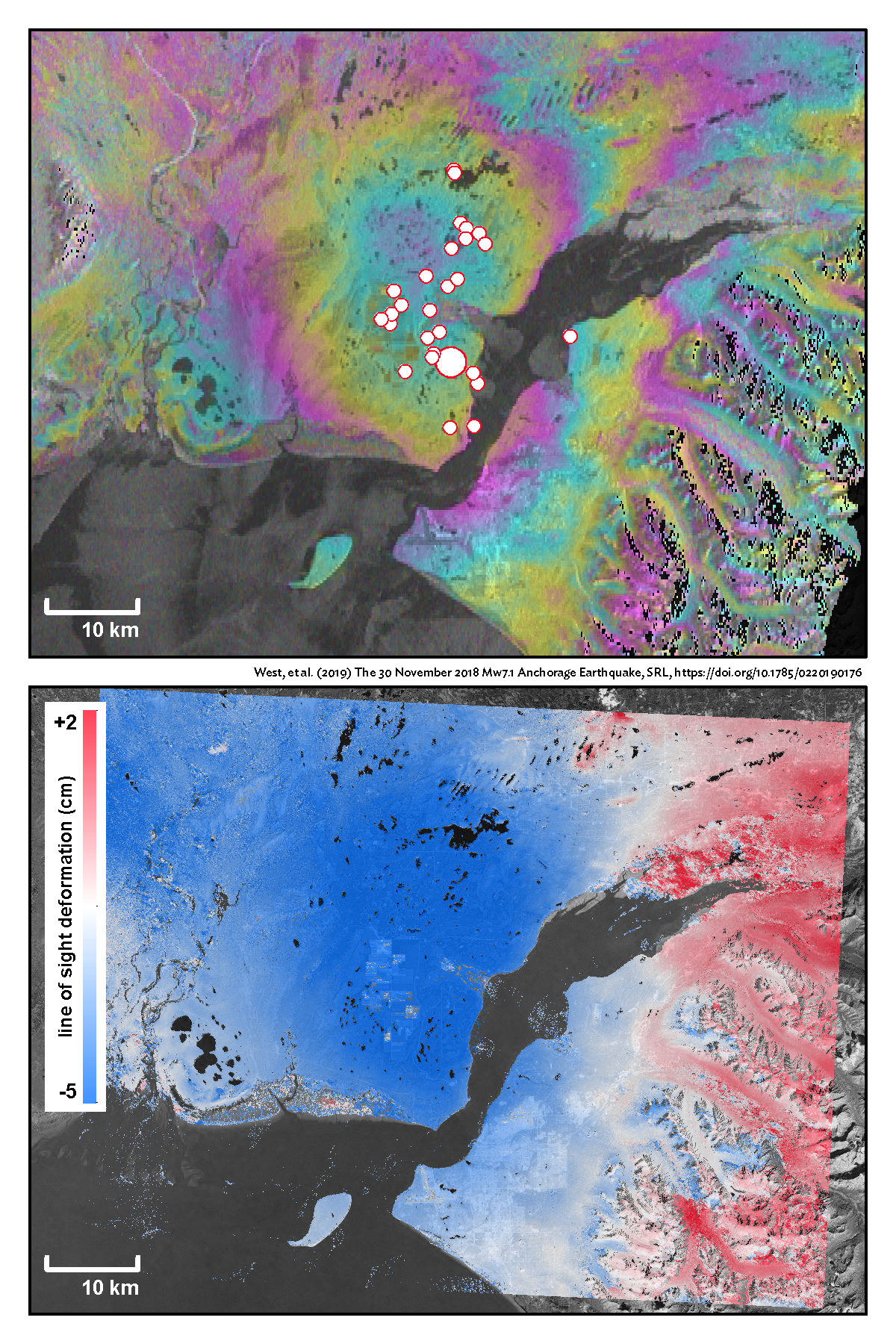2018 M7.1 Anchorage Earthquake
This earthquake occurred at the northeastern end of the Alaska-Aleutian subduction zone, where the subducting Pacific Plate is moving to the north-northwest at about 5.1cm/yr. Subduction of the Pacific Plate beneath Alaska results in extensional stress on the subducting slab. The rupture occurred within the subducting plate and started 35 miles deep and 7 miles north of downtown Anchorage. The rupture broke 10 miles vertically and 12 miles horizontally, but remained well below the surface and within the slab.

The Global Centroid Moment Tensor project solution, the U.S. Geological Survey moment tensor, and West, et. al, 2019 show that the earthquake had a normal faulting mechanism which is consistent with the tectonics of the region.
The aftershocks appear to form two distinct clusters. The northern cluster is slightly offset to the east of the southern cluster. Looking at the aftershocks in cross section, the aftershock patterns dip at different angles (the red dashed lines in the cross sections).

Interferometric Synthetic Aperture Radar (InSAR), available through the SARVIEWS project provides a broad view of deformation caused by the earthquake. The first postevent Sentinel‐1 acquisitions (descending orbit direction) became available on December 4, 2018, five days after the event. The repeating cycles of phase information can be compounded, or unwrapped, and scaled to surface deformation in the line of sight direction of the satellite. Although the line of sight vector includes both a vertical and horizontal component, based on the source depth and mechanism, we infer that this displacement field largely reflects vertical motion. The unwrapped data shows that areas northwest of the epicenter moved downward by more than 5 cm, but there was comparatively modest uplift recorded toward the east. The predominant downward deformation across the region is consistent with the normal‐fault focal mechanism of the mainshock and extension in the slab.







